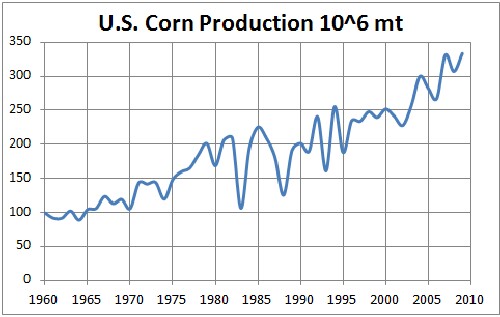
The recent increase in the slope is due to increasing production of ethanol from corn.
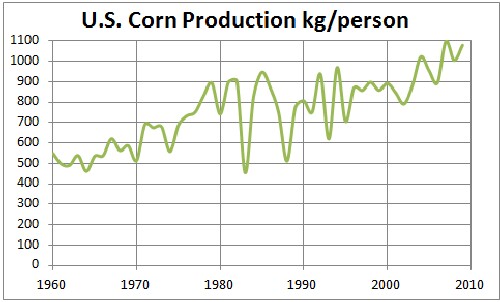
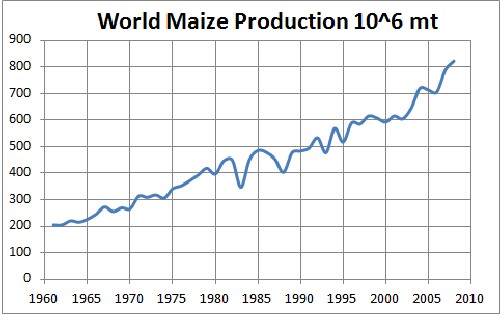
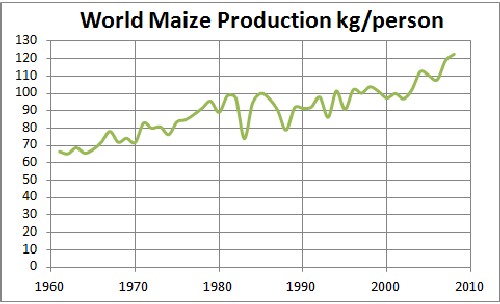
L. David Roper
http://www.roperld.com/personal/roperldavid.htm
05-Apr-2016
The modern methods of crops production require a huge amount of energy derived from extracted petroleum (petroleum is not "produced"; it is "extracted"). The impending peak in crude-oil extraction implies that crops production will also peak. Of course, there may be other factors in causing crops production to peak, such as soil depletion.
This work is an attempt to see if the crops-production data are beginning to show peaking. The food (and fuels for corn and soybeans) crops of corn (maize), rice, wheat and soybeans are studied. Data were obtained from
http://faostat.fao.org/site/567/default.aspx#ancor
It is found that only wheat production is far enough along to show peaking. Some of that peaking may be due to land being converted from wheat production to corn and soybeans production for fuel.
Production units are metric tonnes (= 1000 kg = 1.1023 U.S. tons = 2204.6 lbs).
The recent increase in the slope is due to increasing production of ethanol from corn. |
 |
 |
|
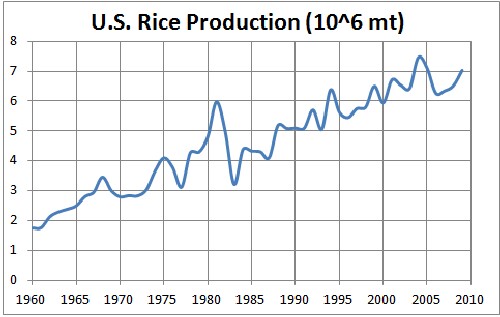 |
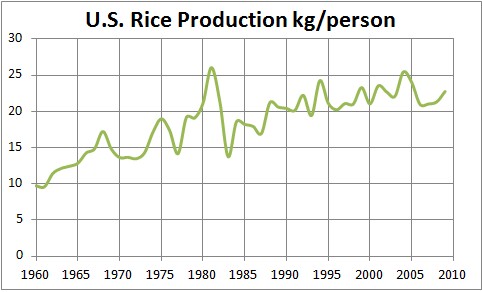 |
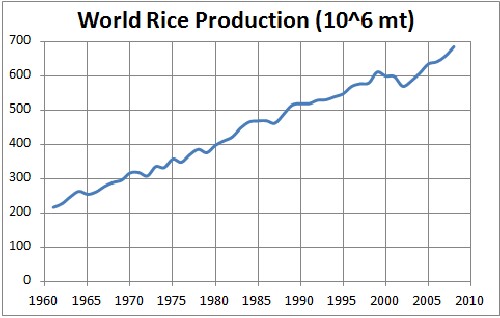 |
It is interesting that rice production per capita has leveled off for the last 20 years. |
The data may indicate a peaking of U.S. wheat production. Some of that peaking may be due to land being converted from wheat production to corn and soybeans production for fuel. |
Since wheat production has leveled off and population has continued to increase, production per capita has decreased. |
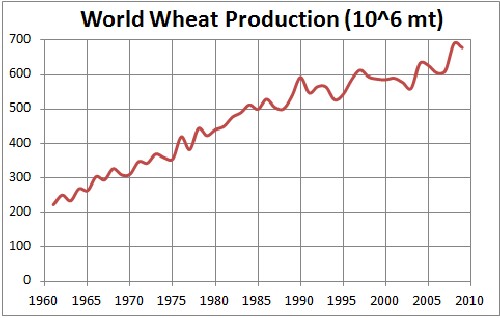 |
Population has grown faster than wheat production; so, production per capita has leveled off for the last three decades. |
The Vehulst peaking-with asymmetry function was fitted to U.S. and World wheat production:
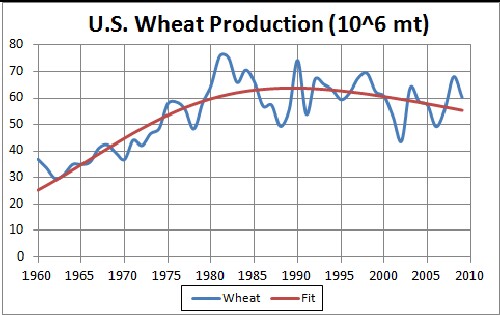 |
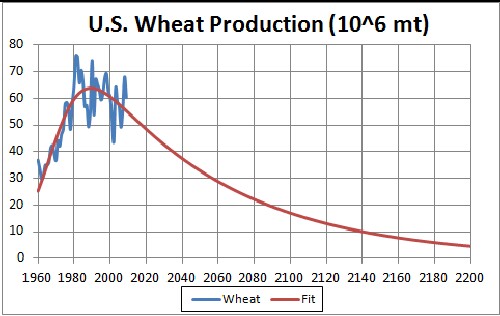 |
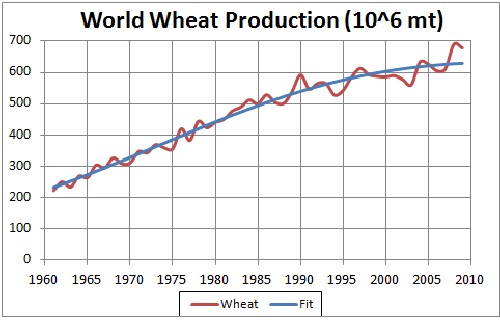 |
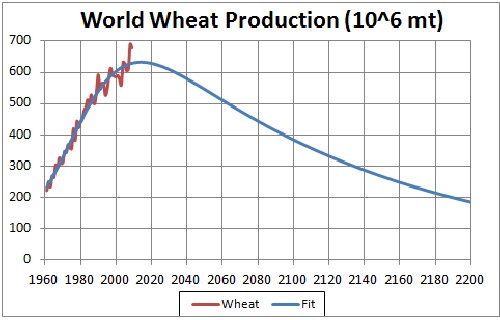 |
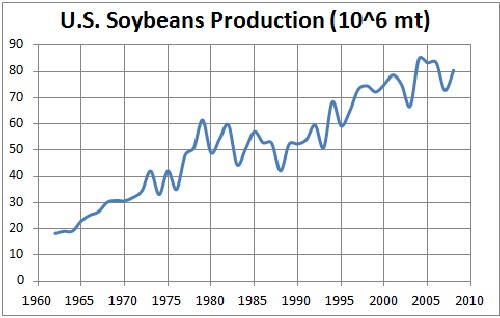 |
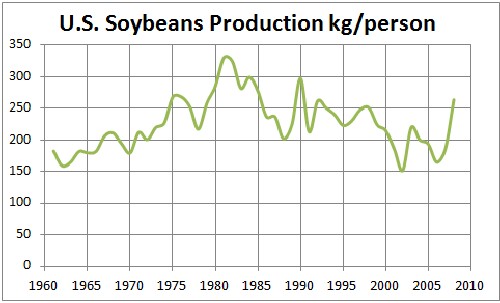 |
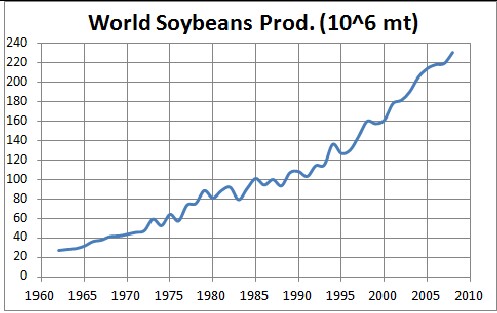 |
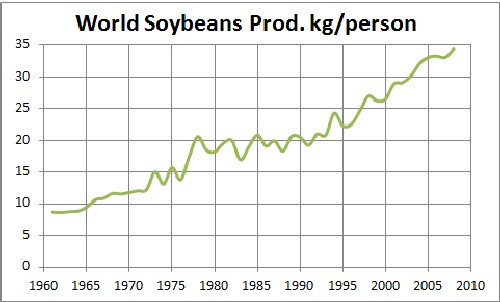 |
Areas planted are given in hectares (= 104 m2 = 2.471 acres).
Rice production is so small compared to corn, wheat and soybeans in the United States that it is not considered further. Note that wheat area has been declining for the last three decades while the corn and soybeans areas have been growing: |
There is a strong anticorrelation (-0.704) between the wheat area and the sum of corn and soybeans areas. |
This is a stacked graph to show the total for corn, wheat and soybeans. |
Note that wheat area has been declining for the last three decades while the corn and soybeans areas have been growing: |
The anticorrelation (-0.425) between the wheat area and the sum of corn and soybeans areas is not as large as for the United States (-0-704) |
This is a stacked graph to show the total for corn, rice wheat and soybeans. |
Units are metric-tonnes/hectare.
United States: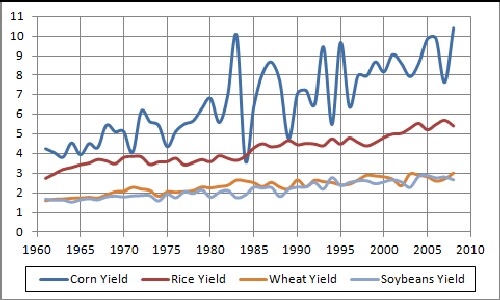 |
World: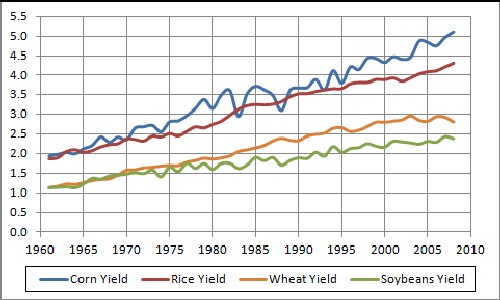 |
Note that corn and rice yields are considerably higher than wheat and soybeans yields both for the United States and the world.
Due to the advent of using oil in agriculture and then peak-oil and then the decline of oil extraction, alongside increasing scientifically-obtained knowledge, the average yields (tonnes per hectare) of the four crops considered in this work (corn/maize, rice, wheat and soybeans) changed from some low value in the far past to the increasing value and, finally, some final value.
The function used to represent this is
 ,
,
where a = value in long past, b = value in near future and c = value in long future.
The following values are assumed to show the effect:
Parameter: |
a |
c |
t2m |
w2(years) |
United States: |
0.5 |
5 |
2100 |
20 |
World |
0.5 |
3 |
2100 |
20 |
The following graphs shows the result of varying the other three parameters (b, t1m, w1):
United States: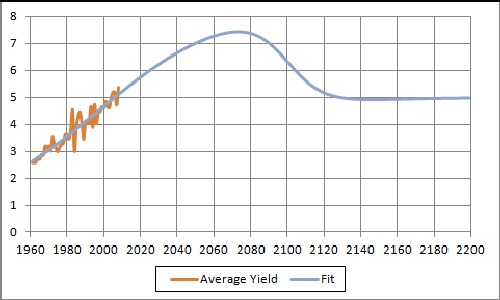 |
World: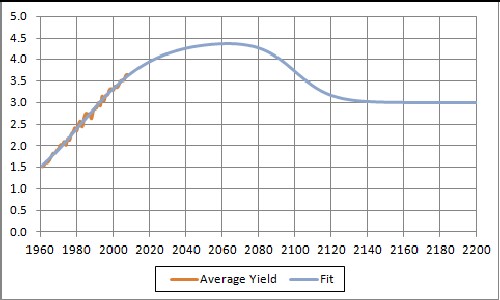 |
It may take longer to settle into the future yields than assumed here.
The peak in United States wheat production is probably due to the shifting of wheat area to corn and soybeans areas to make biofuels (ethanol from corn and biodiesel from soybeans) rather than the current peaking of crude-oil extraction. (Of course, that shifting was due to the knowledge of impending peak oil and global warming due to burning fossil fuels.) The peak of oil extraction will eventually bring down the wheat production independent of area planted and eventually will bring down all grains' production.
L. David Roper, http://www.roperld.com/personal/roperldavid.htm; roperld@vt.edu
L. David Roper interdisciplinary studies